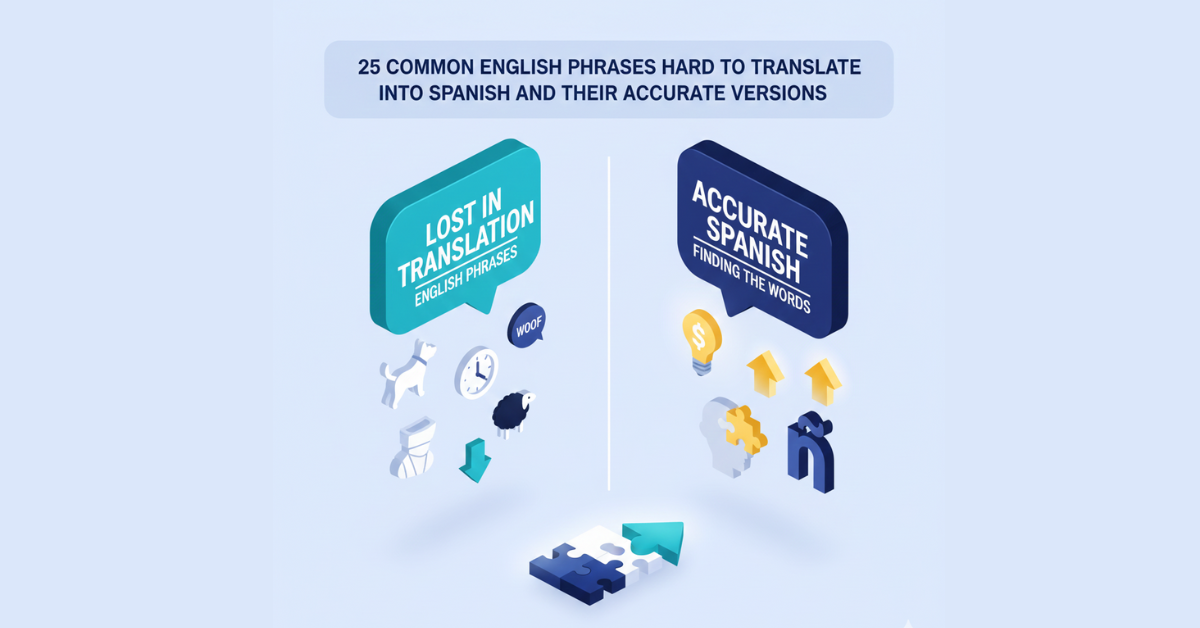Translation and Localization: Exploring the Variances
Feb 15, 2024, Nishi SinghTranslation and localization are two critical processes that enable businesses to effectively communicate with global audiences. In an increasingly interconnected world, understanding the nuances of translation and localization is essential for success in international markets. This blog explores the variances between translation and localization, delving into their definitions, differences, and the important roles they play in global communication. We will also examine how translation and localization benefit various industries and share case studies of successful implementations. Finally, we will discuss the factors that influence the choice between translation and localization and provide insights on overcoming challenges in these processes. By the end of this blog, you will have a comprehensive understanding of translation, localization, and their significance in today's global landscape.
Understanding the Concepts: Translation and Localization
To begin, let's take a closer look at translation and localization. While these terms are often used interchangeably, they have distinct meanings in the field of language services. Translation involves the process of converting text from one language to another, ensuring that the original meaning and context are retained. On the other hand, localization goes beyond language conversion and takes cultural nuances into account. It involves adapting content to suit the target culture, making it relatable and relevant to local audiences. Both translation and localization are vital for effective global communication, but they serve different purposes and require different approaches.
Defining Translation: More than Word-to-Word Conversion
Translation is a multifaceted process that extends beyond a mere word-to-word conversion. It involves linguists who possess not only language proficiency but also cultural knowledge. Translators must understand the context and cultural references of the original content, and then convey them accurately in the target language. They need to employ a variety of techniques, such as direct translation, localization, and transcription, to ensure the message resonates with the target audience. In addition, translators often face the challenge of preserving the tone, style, and intent of the original language while adapting it for the target audience.
Localization: Adapting to Cultural Nuances
Localization, on the other hand, involves a comprehensive adaptation process that goes beyond linguistic translation. It takes cultural references, local culture, and cultural context into consideration to ensure content is culturally appropriate and relatable. For example, website localization involves more than just translating text; it includes adapting date formats, changing currencies, localizing images, and localizing content to suit local market preferences. The ultimate goal of localization is to provide an immersive user experience that feels native to the target audience, in turn, building trust, engagement, and customer loyalty.
Unraveling the Differences between Translation and Localization
Now that we have a basic understanding of translation and localization, let's explore the differences between these two processes. While translation focuses on converting text accurately from one language to another, localization takes cultural and regional differences into account to create a seamless user experience. Translation revolves around language, grammar, idioms, and cultural references, whereas localization encompasses layout, imagery, video game localization, and other factors specific to different regions. The context and purpose of the content also play significant roles in determining whether it should be translated or localized.
Contextual Differences: Translation Vs. Localization
One of the key differences between translation and localization lies in their contextual approaches. Translation focuses on context within the text, such as grammar, text length, idioms, and cultural references, ensuring the translated content reads well in the target language. On the other hand, localization takes into account the cultural differences, market preferences, and customer expectations specific to the target market. This process entails adapting the content and marketing strategy to align with the local culture, context, and user experience requirements. Whether a business should prioritize translation or localization depends on factors such as the target market, market share goals, and customer expectations.
Cultural Adaptations: A Unique Aspect of Localization
Cultural adaptations are a unique and integral aspect of localization. When localizing content, businesses must consider different things, such as locale-specific references, idioms, and culturally sensitive imagery, to ensure cultural nuances are accurately conveyed. For example, localization efforts for different countries may involve adapting website content, marketing materials, and mobile apps. By tailoring the content to suit the cultural preferences and expectations of the target audience, localization efforts can drive audience engagement, enhance user experience, and increase market share.
The Role and Importance of Translation in Global Communication
Having explored translation and localization, let's shift our focus to understanding the role and importance of translation in global communication. Translation plays a vital role in facilitating cross-cultural interactions, enabling businesses to communicate effectively with global audiences. With different languages spoken around the world, translation bridges the gap and ensures that messages are conveyed accurately across language barriers. It not only opens doors to new markets but also helps businesses connect with international customers, fostering deeper engagement and building brand loyalty.
Necessity of Translation in Cross-cultural Interactions
In today's globalized world, cross-cultural interactions have become increasingly common, and translation is an essential tool for effective communication. Whether it's marketing content, website translation, or customer communications, translation enables businesses to reach a global audience that speaks different languages. It ensures that businesses can communicate their core messages, values, and offerings accurately, regardless of the language spoken by the audience. Through translation, businesses can engage with diverse cultures, build international relationships, and expand their market share in new territories.
Impact of Accurate Translation on Global Businesses
Accurate translation has a significant impact on global businesses. It allows businesses to craft market strategies that resonate with local audiences, increasing their chances of success when entering new markets. A well-executed translation strategy ensures that marketing content, website localization, and user experience are tailored to the target audience, driving customer engagement and business growth. By investing in translation management systems and working with professional translators, businesses can ensure that language barriers are overcome, cultural context is preserved, and translated content accurately captures the essence of the original message.
Exploring Localization: Beyond Language Conversion
With translation understood, let's delve deeper into localization, which goes beyond language conversion. Localization involves adapting content to fit cultural preferences, idiomatic expressions, and local market requirements. It encompasses not only language translation but also date formats, legal requirements, and layout considerations, among other factors specific to different regions. Localization aims to create an experience that feels native to the target audience, enhancing user experience and fostering customer trust and loyalty.
Localization's Role in Enhancing User Experience
One of the key objectives of localization is to enhance user experience. By adapting content, imagery, and layout to resonate with the target audience, localization makes the user feel as if the website or app was designed specifically for them. Localization involves more than just language translation; it ensures that cultural references, date formats, and imagery are appropriate for the target market. With proper website localization, mobile app localization, and app translation, businesses can maximize user engagement, foster customer loyalty, and drive business growth.
How Localization Can Drive Business Growth
Localization plays a crucial role in driving business growth, particularly when expanding into foreign markets. A well-planned localization strategy allows businesses to tailor their marketing content, website localization efforts, and mobile app experience to local cultural preferences, language nuances, and user expectations. By investing in localization efforts, businesses can effectively connect with new audiences, expand their reach, and increase market share. Localization helps businesses position themselves as local, trusted entities, fostering brand loyalty and driving customer engagement. By focusing on localization efforts, businesses can build a strong foundation for successful market entry, growth, and sustainability.
Industries Benefiting from Translation and Localization
E-commerce and the entertainment industry have found localization to be the best way to connect with global audiences. Linguists specializing in English, Arabic, and Spanish play a pivotal role in adapting content for international markets. Marketers understand the impact of UI localization in Japan and China. Localization is crucial for internet businesses targeting users in Argentina, while accurate translation is essential for reaching Hebrew and Mexican audiences. Successful localization is a significant factor in driving business growth and enhancing user experience.
Translation and Localization in E-commerce
For successful e-commerce, relying on translated text, proper website localization, and a robust translation management system is essential. E-commerce localization projects aim to ensure that the content resonates with the target market and audience, involving direct translation, content localization, and target language adaptations. Implementing a proper website translation and localization strategy is crucial to enhancing customer experience, user experience, and reaching new markets. This process requires careful consideration and the involvement of linguists, UI experts, and marketers to tailor the content for specific regions such as China, Argentina, Japan, Spain, and more.
The Impact of Localization in the Entertainment Industry
In the entertainment industry, localization is pivotal for video games, diverse languages, and cultural nuances. The industry's localization strategy focuses on varied regions, idioms, and specific localization projects. Effective entertainment localization ensures optimal user experience, cultural context, and targeted marketing strategies. Localization efforts in entertainment encompass adapting layout, imagery, and content for different audiences. Successful marketing content, translation processes, and transcreation further enhance user experience within the entertainment industry.
Case Studies: Successful Implementations of Translation and Localization
Successful Implementation of translation and localization is the best way to ensure global relevance and resonance. In a world where different processes demand linguistic and cultural adaption, successful case studies have shown that adept localization has enhanced user experience and engagement. For instance, in the localization of a mobile app from English to Arabic, the UI changes resulted in increased user retention. Similarly, localization of web content from Spanish to Chinese saw a surge in internet traffic, proving the critical role of localization in SEO. These case studies highlight how linguists and marketers can effectively leverage localization to reach diverse markets including Japan, Argentina, and Mexico.
Example 1: Localization Success in the Fashion Industry
In the fashion industry, localization efforts encompass the translation of text, imagery, and website content. Successful localization relies on a robust translation management system, direct translation, and the incorporation of new languages. A strategic approach to website translation and localization is essential for enhancing customer and user experiences, along with maintaining cultural references. This ensures that the content resonates with the target market, audience, and specific demographics. Leveraging effective marketing content, the translation process and transcreation further enriches the user experience within the fashion industry.
Example 2: Effective Translation in International Politics
In international politics, the translation process involves transcreation, legal requirements, and user experience. It requires effective translators, a solid marketing strategy, and an understanding of cultural differences. Localization efforts in international politics encompass direct translation, content localization, and the target language. Proper localization ensures user experience, cultural context, and effective marketing strategy. Enhancing user experience in international politics is achievable through effective marketing content, the translation process, and transcreation.
Determining the Need: Translation or Localization?
Factors such as target market, global audience, and cultural context influence the choice between translation and localization. A proper localization and translation management system help ensure that content resonates with local culture and customer experience. The decision depends on understanding the unique needs of different regions and languages.
Factors Influencing the Choice between Translation and Localization
When deciding between translation and localization, several factors come into play. Cultural differences, legal requirements, and direct translation all influence this choice. A solid localization strategy ensures that content resonates with the target audience, enhancing user experience and increasing market share. The process involves not only translation but also adapting date formats, meeting legal requirements, and incorporating cultural references. Understanding the cultural context of different countries and the source language is crucial in determining whether to opt for translation or localization. The localization process customizes marketing content, website, and mobile apps to suit different regions.
Overcoming Challenges in Translation and Localization
Understanding the cultural disparities plays a pivotal role in the success of localization endeavors. Adapting content to suit the preferences of the target audience is imperative for effective localization. Legal prerequisites differ across various countries, thereby influencing translation endeavors significantly. Website localization necessitates meticulous attention to date formats and user interface for an enhanced user experience. Incorporating cultural references into the marketing strategy is essential for successful translation and localization.
How to Choose Between Translation and Localization for Your Business?
When deciding between translation and localization for your business, consider the target market's language and cultural nuances. Localization is essential for specific markets with different languages, while translation caters to a global audience. Both ensure a positive customer experience in different regions and expand your market share to new languages and target audiences. Determine the need based on cultural context and desired reach.
Conclusion
Accurate translation is vital for effective cross-cultural interactions and can have a significant impact on global businesses. Localization, on the other hand, enhances user experience by adapting content to specific cultural preferences and norms. Both translation and localization play key roles in various industries such as e-commerce and entertainment, where reaching a diverse audience is crucial.
To determine whether you need translation or localization, consider factors such as target audience, cultural sensitivity, and business goals. Overcoming challenges in translation and localization requires careful planning and consideration of these factors.
If you're unsure about the best approach for your business, our experts are here to help. Book a free consultation or demo to learn more about how translation and localization can benefit your global communication efforts.






